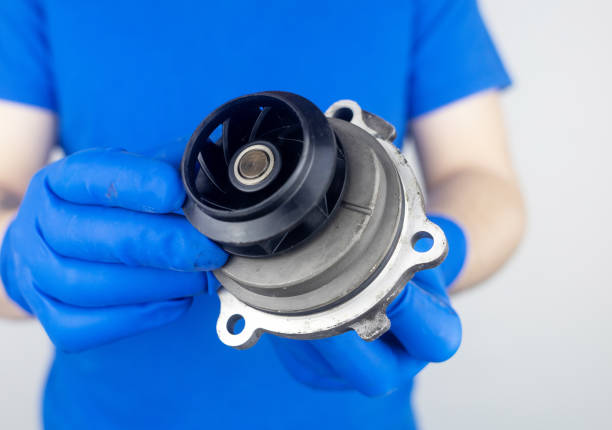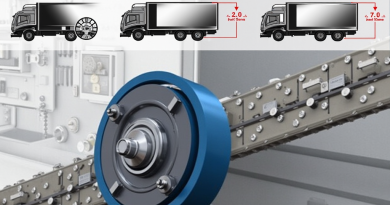The Essential Guide to PSI Engine Cam Cover O-Ring Size: A Crucial Component for Engine Performance
Introduction
In modern engines, sealing components play a critical role in maintaining performance, longevity, and efficiency. One of the most crucial yet often overlooked parts in an engine’s sealing system is the O-ring. Specifically, the PSI engine cam cover O-ring is designed to provide a tight seal between the camshaft cover and the engine block, preventing oil leaks and ensuring the internal components are properly lubricated.
Understanding the significance of this O-ring, its correct sizing, and how to maintain or replace it can have a significant impact on your engine’s performance. In this article, we will explore the PSI engine cam cover O-ring size, what factors influence its sizing, how to choose the right O-ring for your engine, and much more.
What Is a PSI Engine Cam Cover O-Ring?
Before diving into the specifics of sizing, it’s essential to understand what the PSI engine cam cover O-ring is and what role it plays in an engine.
The PSI engine cam cover O-ring is typically used in performance and high-output engines. It is a circular ring, usually made from rubber, silicone, or other elastomers, that fits into the groove of the camshaft cover. The cover itself is a critical component that houses the camshaft, one of the engine’s most vital parts. The O-ring ensures a leak-free seal between the cam cover and the engine block, keeping the engine’s oil where it belongs.
In performance engines, especially those running at higher pressures or temperatures, the O-ring also helps manage increased demands on the engine’s sealing system. A well-maintained O-ring prevents oil leakage, which could lead to lower engine oil levels, overheating, and possibly severe engine damage.
Why the Correct Size of the PSI Engine Cam Cover O-Ring Matters
The size of the O-ring plays a crucial role in the effectiveness of the seal. If the O-ring is too small or too large, it may not form a proper seal, allowing oil to leak or causing excess pressure to build up. A poorly sized O-ring can also lead to premature wear, increased friction, and higher maintenance costs.
When choosing the right size O-ring, consider the following:
- Material Compatibility: The O-ring material must be compatible with the engine’s operating conditions (e.g., temperature, pressure, and exposure to oils and other chemicals).
- Seal Integrity: The O-ring should fill the entire groove within the cam cover, ensuring it creates a proper seal and does not allow any oil to escape.
- Durability: A correctly sized O-ring will withstand the engine’s stresses, vibrations, and temperature fluctuations, ensuring long-lasting performance.
Factors Affecting PSI Engine Cam Cover O-Ring Size
The correct size for your PSI engine cam cover O-ring is influenced by several factors:
1. Engine Make and Model
The specific size of the O-ring will depend on your engine’s make and model. Different engine designs have different specifications for cam covers, and the O-ring must be sized accordingly. Always refer to the manufacturer’s manual or specifications for the exact size.
2. Camshaft Cover Design
Cam covers come in various shapes and sizes, and the groove where the O-ring sits can vary as well. Some cam covers have multiple grooves, while others might have a single one. The size and depth of these grooves must be matched by the O-ring to ensure a proper fit.
3. Engine Type and Usage
Performance and race engines often have different sealing requirements than standard road-going engines. Engines subjected to higher temperatures, pressures, or vibrations require O-rings that are not only the correct size but also made of more durable materials.
4. Temperature and Chemical Exposure
Engine components are exposed to high heat and various chemicals. O-rings must be made from materials that can withstand these conditions. Materials such as silicone or fluorocarbon elastomers are often used for performance engines due to their resistance to high temperatures and oils.
5. Tolerances and Seal Compression
O-rings need to be compressed to create an effective seal. The right size ensures that the O-ring will be slightly compressed when installed, allowing it to expand and fill the groove. Too much compression can cause the O-ring to fail prematurely, while too little can result in leaks.
How to Measure PSI Engine Cam Cover O-Ring Size
To measure the PSI engine cam cover O-ring size, you’ll need to determine two key dimensions:
- Inner Diameter (ID): This is the measurement of the O-ring’s internal diameter. It needs to fit snugly around the camshaft or other components it’s sealing.
- Cross Section or Thickness: This is the thickness of the O-ring. It should be thick enough to create a tight seal but not so thick that it prevents the cam cover from fitting properly.
To measure the O-ring size, you’ll need a caliper or micrometer. Measure both the inner diameter and the thickness of the O-ring, and compare those measurements to the manufacturer’s specifications.
Choosing the Right PSI Engine Cam Cover O-Ring
When selecting an O-ring for your engine, follow these steps:
1. Check Manufacturer Specifications
Always consult your engine’s manual or the cam cover manufacturer’s recommendations for the correct O-ring size. These specifications will tell you the exact dimensions and material type needed.
2. Consider Material Options
O-rings come in various materials, such as rubber, silicone, or Viton. Choose a material that is designed for high-performance engines and can handle extreme conditions.
3. Use Quality Parts
Always choose high-quality O-rings from reputable suppliers. Cheap, low-quality O-rings may not offer the durability or sealing performance required for high-performance or PSI engine setups.
4. Replace Regularly
O-rings degrade over time, especially in high-stress environments. Periodically check the O-ring for wear and replace it as necessary to prevent oil leaks and maintain engine integrity.
How to Install the PSI Engine Cam Cover O-Ring
Installing the cam cover O-ring is relatively straightforward, but it’s important to follow the right steps to ensure a secure fit:
- Clean the Groove: Make sure the groove where the O-ring sits is clean and free of debris. Dirt or old O-ring residue can prevent a good seal.
- Lubricate the O-Ring: Lightly lubricate the O-ring with engine oil or a compatible lubricant before installation. This makes it easier to install and prevents damage to the O-ring during installation.
- Place the O-Ring in the Groove: Carefully place the O-ring into the groove of the cam cover. Make sure it sits evenly around the entire circumference.
- Install the Cam Cover: Once the O-ring is in place, install the cam cover as per the manufacturer’s instructions. Tighten the bolts or fasteners evenly to ensure a uniform seal.
- Check for Leaks: After installation, start the engine and check for any signs of oil leaks. If there are leaks, ensure that the O-ring is properly seated and replace it if necessary.
Conclusion
The PSI engine cam cover O-ring is a small yet essential component that plays a significant role in maintaining engine performance and preventing oil leaks. Whether you’re working with a standard engine or a high-performance model, selecting the right size O-ring and material can ensure your engine runs smoothly for years to come. Always consult your engine’s specifications and use high-quality O-rings to maintain a proper seal.
By following the tips and guidelines in this article, you can confidently maintain or replace the cam cover O-ring, knowing you are enhancing your engine’s reliability and longevity.
Frequently Asked Questions
- How can I tell if my PSI engine cam cover O-ring is damaged?
Look for signs of oil leaks around the cam cover area, or check for oil stains under the engine. If the O-ring is cracked, deformed, or shows signs of wear, it should be replaced. - Can I use any O-ring for my cam cover?
No, it is essential to use the correct size and material for your specific engine and cam cover. Using the wrong O-ring can lead to leaks or other engine performance issues. - How often should I replace the PSI engine cam cover O-ring?
Typically, the O-ring should be replaced whenever the cam cover is removed for maintenance or if you notice oil leaks. It’s a good practice to inspect the O-ring regularly to avoid unexpected failures. - What materials are best for PSI engine cam cover O-rings?
Silicone, Viton, and other high-temperature elastomers are ideal for performance and high-pressure engines. They can withstand heat, pressure, and exposure to engine oils. - Can I reuse the cam cover O-ring?
While some O-rings may appear to be reusable, it is best practice to replace them during maintenance to ensure the integrity of the seal and avoid leaks. - How do I measure the size of the cam cover O-ring?
Use a caliper or micrometer to measure the inner diameter and thickness (cross-section) of the O-ring. Compare these measurements to the specifications provided by the manufacturer. - Can I install the cam cover O-ring myself?
Yes, installing the O-ring is relatively simple if you follow the proper procedures. Make sure the groove is clean, and the O-ring is lubricated before installation to avoid damage.




